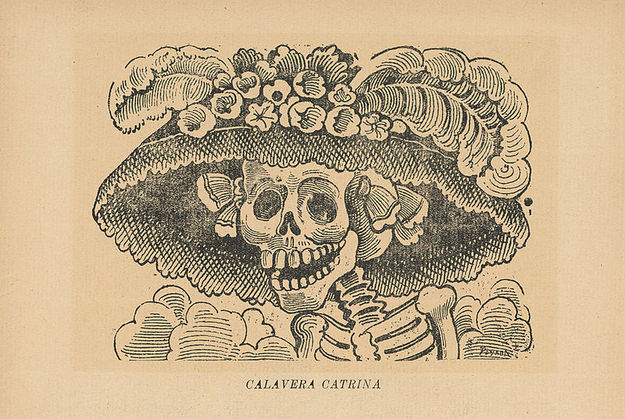José Guadalupe Posada was born Feb. 2, 1852, in Aguascalientes, Mexico, to illiterate parents of indigenous descent.
He reportedly enjoyed drawing even as a child, and used to draw portraits of his brother — Jose Cirilo, who became a schoolteacher and taught his brother to read — and his students.
He apprenticed in lithography in a workshop where he also learned basic printmaking techniques of engraving wood and metal. He was wooed from his workshop by Antonio Vanegas Arroyo, an editor who published street gazettes, with the promise of complete artistic freedom.
It is commonly thought that it was during this association with Arroyo that Posada first created the calavera — “a humorous, vivid drawing of dressed-up skulls or skeletons engaged in activities such as dancing, cycling, guitar playing, drinking or masquerading.”
In reality, as early as 1883, Manuel Manilla had been publishing calaveras in newspapers and street gazettes.
It was Posada who popularized them, and is thusly most strongly associated with them.
In an essay on Posada as lampooner, Ilan Stavans writes, “In a European context, calaveras derive from the medieval imagery of the danse macabre, or Dance of Death. […] Posada so personalized the imagery, though, his calaveras have become metaphors for his homeland: they are to Mexico what Uncle Sam is to the United States.
Posada originally printed calaveras to celebrate the Day of the Dead. They proved to be “immensely popular,” largely due to their humor; this ingredient makes his images “as compelling today as they were in his time.”
Compiled from Ilan Stavans, "Jose Guadalupe Posada, Lampooner," by Xima Avalos.

